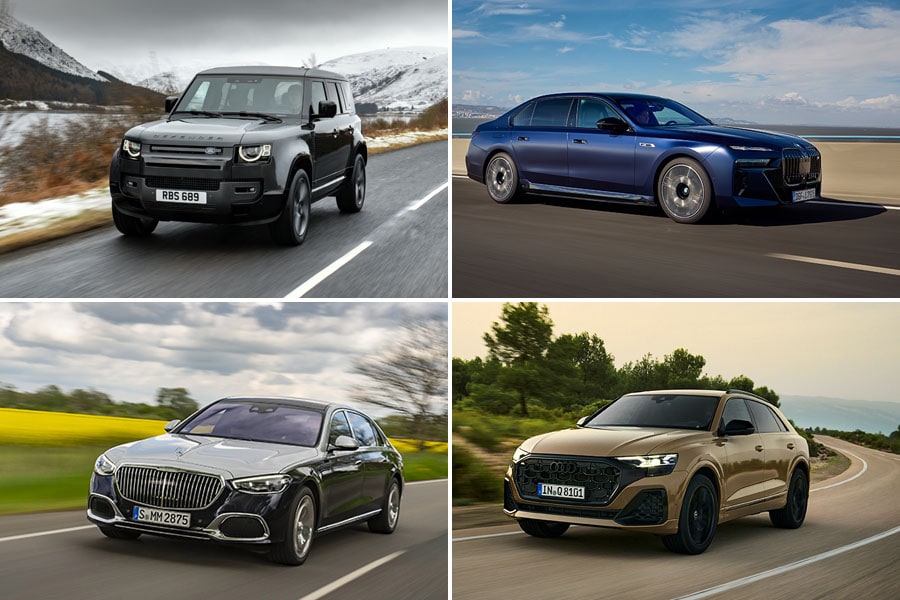
Why the luxury car market is zipping in India
The growing population of wealthy second-generation business owners and start-up professionals, who are ready to splurge, coupled with post-Covid resurgence in industries have given a fillip to high-end car sales
 (Clockswise from left) JLR, BMW, Mercedes-Benz and Audi are leading the Indian luxury car market.
(Clockswise from left) JLR, BMW, Mercedes-Benz and Audi are leading the Indian luxury car market.
You’ll know the Land Rover Defender best as that big boxy SUV in James Bond movies that’s pulling implausible moves as it chases down the protagonist. It’s hard not to be enamoured with cars like this, and Indian buyers seem to be no exception.
JLR India has sold over a thousand of these, which start upwards of Rs 1 crore. Combined with the even more high-end Range Rover models, sales have grown by 72 percent in 2023.




